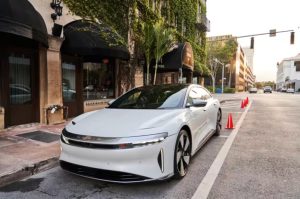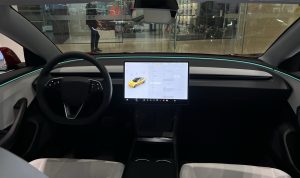Elon Musk Showcases “Hands-Free Autonomous Driving,” Subpoenaed to Testify in Tesla Case
5 min read
Tesla and Regulatory Authorities in “Ultimate Showdown”
Elon Musk’s flaunting of the Full Self-Driving (FSD) capabilities is far from over, but regulatory authorities have beaten him to the punch.
Investigation: Tesla’s concealed “hands-free driving mode,” the “Elon Mode.”
Furthermore, it was stated that Tesla must cooperate, or else face fines of $26,000 per day (approximately 189,500 RMB).
On the other hand, Tesla’s highly controversial “fatal accident” case has reached a critical juncture: Musk is in a tug-of-war with the Department of Justice, striving to avoid testifying in court directly.
As public opinion continues to escalate, various accidents previously caused by Tesla’s autonomous driving have also resurfaced for discussion. Musk and Tesla’s autonomous driving are facing mounting troubles.
Recent signs suggest that the showdown between regulatory authorities and Tesla may be approaching its climax.
Rules and Prospects for L2+ Advanced Driver Assistance Systems are at a Turning Point.
“Investigation into the Elon Mode”
Recently, Elon Musk live-streamed a test of the FSD V12 capabilities, which attracted significant attention.
The live video had over 11 million viewers online, sparking ongoing discussions about autonomous driving, end-to-end solutions, and neural networks.

The most explosive moment in the entire video was when, during a 45-minute drive, Musk only intervened once.
For the rest of the time, Musk was seen sitting in the driver’s seat, holding his phone, and live-streaming.
However, the fact that he didn’t need to touch the steering wheel and the system didn’t issue any warnings might suggest that there is indeed a hidden mode within FSD, known as the “Elon Mode.”
In fact, not long ago, hackers discovered this “Elon Mode” in the system’s backend, which allows for extended hands-free operation without any driver behavior monitoring.

Under normal circumstances, FSD requires the driver to keep both hands on the steering wheel, apply some force to it, and maintain focused attention.
If the system detects hands off the steering wheel or the driver’s gaze wandering, it issues safety alerts. After five such reminders, the driver may lose access to FSD Beta.
However, when the Elon Mode is activated, the system disables the steering wheel reminder function, and the steering wheel doesn’t vibrate when hands are off it.
This aligns with what was observed during the live stream, where even when Musk wasn’t holding the steering wheel, the FSD system didn’t issue safety alerts.
Musk’s boasts extend beyond the live stream. These days, he’s been active on Twitter, openly stating his belief that a truly convenient and user-friendly intelligent driving system is one that doesn’t have driver monitoring warnings.

Elon Musk, being in the spotlight, naturally attracts special attention from regulatory authorities when it comes to Tesla.
The National Highway Traffic Safety Administration (NHTSA) in the United States has initiated a new investigation into Tesla. The NHTSA is concerned that existing Tesla vehicles can all use the “Elon Mode.” Since the public is aware of the existence of this mode, it may encourage more drivers to activate it, potentially leading to increased driver distraction and reduced supervision of the autonomous driving system.
As a result, the NHTSA has requested Tesla to provide a series of information regarding the “Elon Mode,” or else face fines of up to $26,000 per day (approximately 189,500 RMB).
It is currently unclear whether Tesla has responded to the NHTSA’s request.
However, this is just one of the troubles Tesla’s autonomous driving is facing. The next one is even more critical.
Tesla Crash Case: Musk Ordered to Testify
At the core of this case is an accident that occurred in 2018, where an 18-year-old driver was at the wheel of a Model S that lost control, resulting in the death of the driver and a passenger.
The accident was attributed to speeding and loss of control, and Tesla was sued because the deceased’s family believed that Tesla’s electronic speed limit system did not work and that Tesla engaged in false advertising.
Recently, the judge presiding over this case approved an order requiring Musk to testify. He will undergo a 60-minute deposition regarding his promotion of Tesla technology related to this incident.

The discussion around this case revolves around several key points.
Firstly, it’s the technical aspect of the case itself, specifically the electronic speed limit function, which is closely related to autonomous driving. Features like basic Level 2 functionality such as cruise control and the functioning of passive safety mechanisms like AEB rely on speed limiter data to determine activation conditions.
Another aspect is the serious consequences of the case, as it is related to a series of accidents caused directly by autonomous driving systems by Tesla. These incidents raise questions about the safety and reliability of Level 2 systems as they become more widespread.
However, AI technology itself is complex and often considered a “black box,” which has shifted the focus of lawsuits related to Tesla’s safety incidents towards “false advertising.”
In essence, it’s alleged that Tesla knowingly concealed risks, failed to mention them in its advertising, and even misled users into thinking that their vehicles could achieve “full self-driving” capabilities.
In previous cases, Tesla’s AI head admitted in court that Tesla had falsified autonomous driving safety videos internally, and he specifically pointed to directives from Elon Musk.
Now, the ongoing controversy and safety tug-of-war regarding Tesla’s autonomous driving systems are coming to a head as Musk is being called to testify in person. This is a crucial point that has garnered widespread attention.
Interpretation:
Tesla has reached a point of no return, with most of its maneuvering options exhausted. The legal means of gathering evidence have now reached the core and soul of this tech giant—Elon Musk himself.
Firstly, Musk cannot afford to lie or perjure himself in court, as the consequences could be even more severe. This was a core reason why Tesla’s former head of autonomous driving disclosed crucial information.
If Musk were to testify to “false advertising,” it could have detrimental effects. Tesla’s brand image would take a significant hit, and its product development and marketing strategies could be disrupted or even halted.
As a leader and bellwether in the exploration of autonomous driving technology, Tesla’s fate has repercussions for the entire future of the widespread adoption of intelligent driving.
Musk is currently trying various legal tactics to mutually constrain each other and avoid appearing in court directly.
Looking at the bigger picture, the investigation into Tesla’s hands-free mode, along with the critical phase in the trial related to the fatal accident, signifies a turning point for the widespread adoption of Level 2, Level 2+, and Level 2.5 intelligent driving technologies.
Firstly, it’s important to recognize that whether it’s advanced autonomous driving or the currently prevalent intelligent driving, it’s highly unlikely to achieve zero accidents. However, the significance of this technology lies in its overall reliability exceeding that of humans, resulting in practical value and a reduction in overall traffic accident rates.
In the face of potential accidents during the use of these systems, automakers should use scientific data to demonstrate the reliability of their systems. The legal system should have clear methods for assigning responsibility, and there should be corresponding insurance mechanisms on the commercial side to incorporate this high-tech into reasonable and legal business operations.


